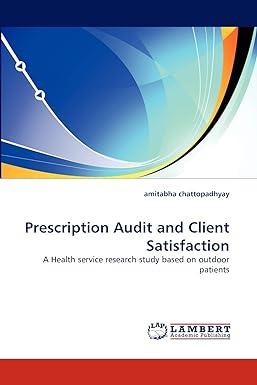Question
COWBOY RENTALS (CR) does business by leasing single-family homes, minimizing the upkeep on them, and then renting them to OSU students. The paragraphs below describe
COWBOY RENTALS (CR) does business by leasing single-family homes, minimizing the upkeep on them, and then renting them to OSU students. The paragraphs below describe part of the acquisitions cycle (how they lease the houses from the owners and not the revenue cycle) for CR.
CR only deals primarily in single-family houses in Stillwater, although it occasionally acquires leases for multiple unit dwellings. All of its homes away from home are leased from their present owners by CR employees who are called CR-agents. Lease contracts negotiated by these agents always deal with just one house, and the leases may last 3-5 years. All houses have unique street addresses.
Every house is also given a single neighborhood designation by CR depending upon where it is located. Sample neighborhoods are Maple Street, Fiesta Square Mt. Sequoyah (few CR houses), and the South End (many CR houses). Those houses that are not associated with one of these specific neighborhoods are associated with general neighborhood designations such as near campus or outskirts, depending upon their distance from campus. CR assigns a specific CR-agent to each neighborhood to negotiate leases for all houses in that neighborhood, but each CR-agent may be assigned to multiple neighborhoods.
CR enters information on each house into the database after the lease contract is signed; however, they enter information on neighborhoods is entered into the database as soon as CR determines that a new one exists (such as would happen when on a new subdivision is being built). CR determines its ultimate rental rates to its student customers by considering such matters as lot-size and number-of-bedrooms for each house, so it tracks data like that carefully. Additionally, CR applies a monthly rental surcharge to each house that depends solely upon its neighborhood designation. These monthly surcharges range from very high (Mt Sequoyah) to very low (South End), but every house has rental surcharge, and all houses in a particular neighborhood have the same surcharge.
Many CR lessors own multiple houses which they lease to the company, but each house has only one owner for the length of the lease contract. The lease payments that CR pays to the owners are handled by CR-cashiers, who are actually a much duller class of employees than the flamboyant CR-agents who revel in their ability to wheel and deal real estate at the expense of both owners and students.
Cashiers are bonded for security purposes, and cashiers never become agents (or vice-versa). Payments to lessors are made by checks which are drawn from company bank accounts. The check numbers used from each account are unique to that account, but they do duplicate across accounts (for example, there can be a check #100 drawn from account A-12 and another check #100 drawn from account A-16). Checks are also used to discharge other obligations of the company, such as advertising and taxes. There are some CR bank accounts from which checks are never written.
CR makes payments to the owners at the end of each month. Most leases do not require any kind of a payment at contract signing time. When multiple lease payments are due to the same lessor during the same month (because CR is leasing more than one property from that person), cashiers simply disburse one check for the combined payment.
CR records information concerning both employees and lessors in the database as soon as it is known without waiting for any transactions to take place.
REQUIRED: Using the information above and the list of attributes below (no additions), draw an Entity-Relationship diagram with entities, relationships, attributes, and cardinalities (participation). Designate key attributes appropriately.
- neighborhood name
- number of houses leased in this neighborhood
- lessor ID#
- lessor name
- cashier employee#
- agent employee#
- check#
- disbursement $ amount
- cashier bonding status
- cash account #
- agent real estate license status
- rental surcharge amount
- house street address
- house zip code
- lease contract #
- monthly lease fee
- lease duration in months
- lot size
- number of bedrooms
- cash account balance
Step by Step Solution
There are 3 Steps involved in it
Step: 1

Get Instant Access to Expert-Tailored Solutions
See step-by-step solutions with expert insights and AI powered tools for academic success
Step: 2

Step: 3

Ace Your Homework with AI
Get the answers you need in no time with our AI-driven, step-by-step assistance
Get Started


